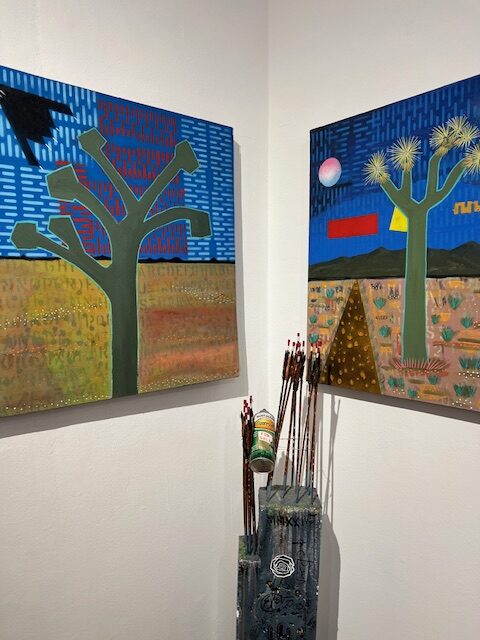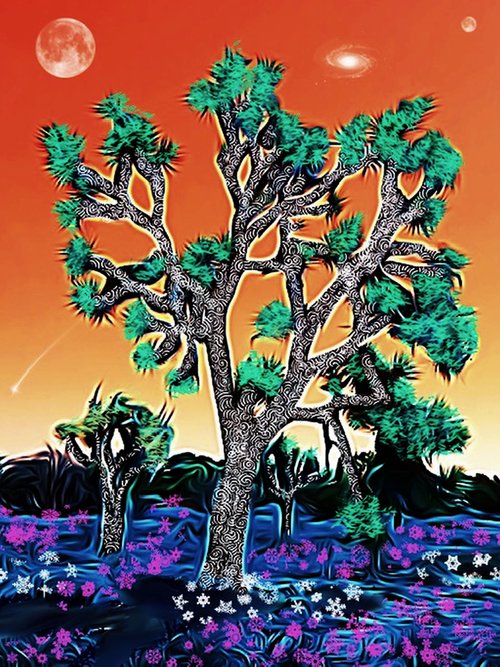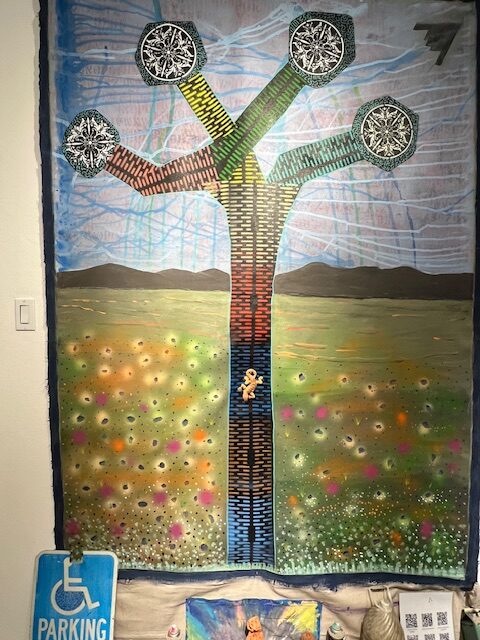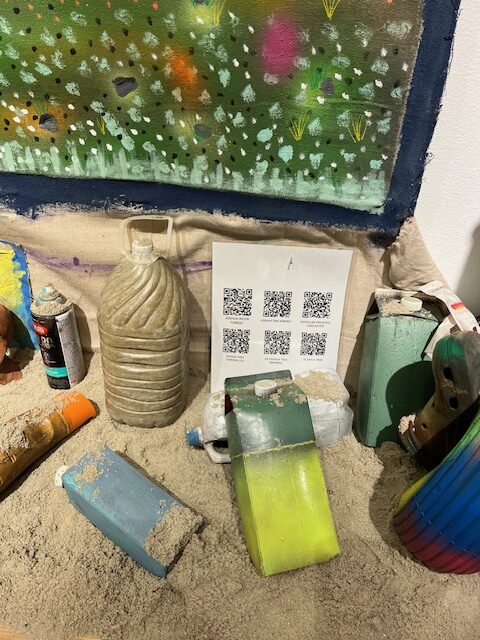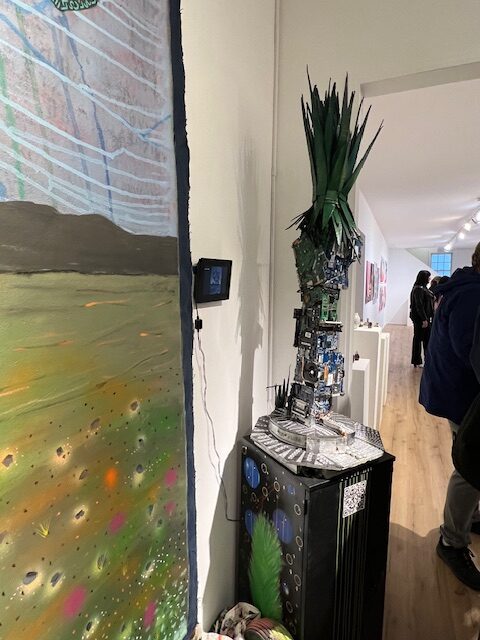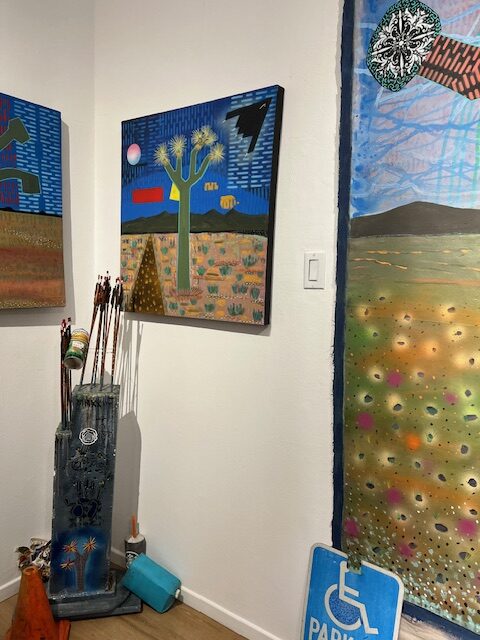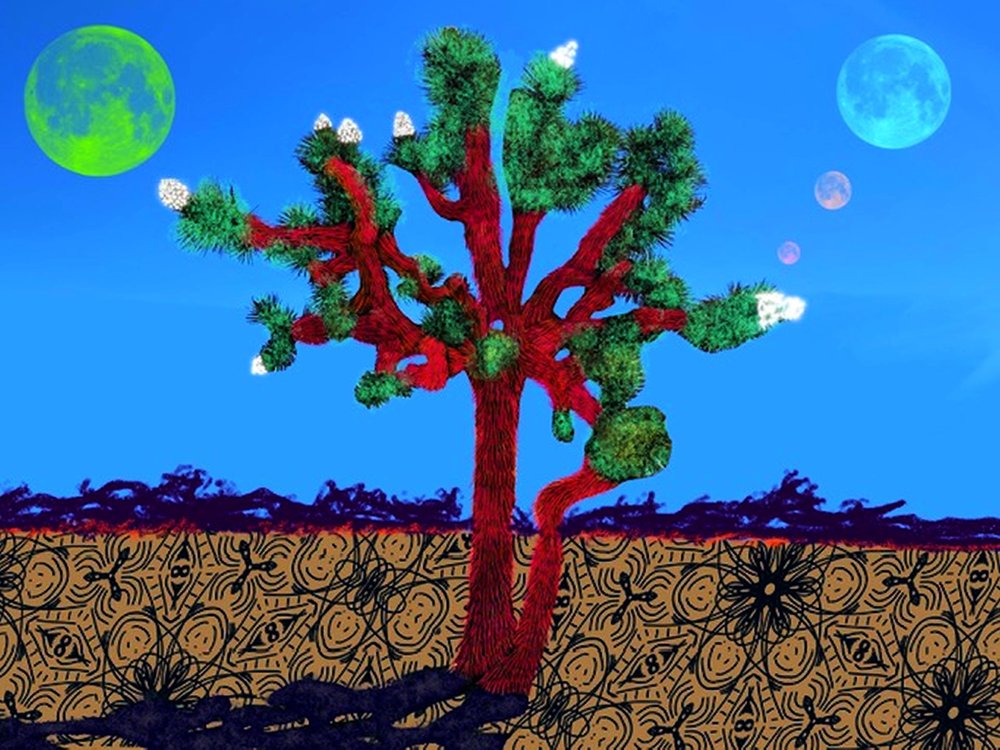With exhibiting gallery spaces from New York to New Mexico, the U.K. to Peru, the LA Art Show roars into the Los Angeles Convention Center from February 14 to 18. Along with the enormous mix of galleries – over 120 of them – offering a far reaching collection of mediums and artists, there are a variety of other offerings to engage attendees.
Among the standouts this year are 7 participating non-commerical art institutions exhibiting in DIVERSEartLA. Exciting solo projects explore the intersection of memory, humanity, and AI. These include:
The Museum of Art and History in Lancaster with the lustrous multi-media work of Osceola Refetoff, “Repairing the Future,” focusing on global sea level rise. The work includes a large-scale immersive projection of the artist’s 8-minute film Sea of Change shot by Refetoff in Svalbard, Norway, near the North Pole. His visuals are paired with those of NASA satellites and AI-generated animation of possible future climate outcomes. The original soundtrack is written and performed by award-winning composer Paul Cantelon. The exhibition will be accompanied by a performance from Hibiscus TV artists Kaye Freeman and Amy Kaps on February 17.
The Nevada Museum of Art presents “The Journey” by contemporary artist Guillermo Bert, curated by Vivian Zavataro. The installation features a series of 20 highly-detailed, life-sized wood sculptures of actual immigrants employed as frontline workers. Bert’s multimedia work explores how ancient traditions and modern technology merge to create narratives of
identity, human memory, immigration, culture, and humanity.
The Museum of Contemporary Art in Bogotá offers “Mythstories” by multimedia artist Carlos Castro Arias and curated by Gustavo Adolfo Ortiz Serrano. Appropriating the style and iconography of medieval tapestry, Castro uses anachronisms and the re-
contextualization of found objects to create connections across times and cultures. His work experiments with myth, history, and AI, and explores individual and collective identity.
MUSA Museum of Art University of Guadalajara, Grodman Legacy and Guadalajara Foundation (Mexico) presents “Fake Memory of a True Past” curated by Moises Schiaffino. This project seeks to create a reflection on the use of artificial intelligence (AI) as a tool to generate a historical archive. This video installation tells the same story from two different visions: the human and the artificial, making a visual comparison of the memory that the human being has preserved with the one that, through algorithms, the AI has generated.
AAL Museum (Santiago, Chile) is exhibiting the visual narrative, “Be Water” from contemporary artist, Antuan. The immersive installation explores the significance of this vital element with Antuan’s creation of the Human Net, a human geometric structure,
symbolizing the symmetry of the universe. The characters within represent humanity’s urgent need to address the global water crisis, highlighting the essential collaboration between humanity and AI to create a new network of human consciousness.
Raubtier Unicus Productions (Los Angeles) presents “Bridging Emotional and Digital Landscapes,” exploring the intersection of human emotion and advanced technology to create a digital mural of individual and collective experiences. The audience engages with a touchscreen to input words or phrases that resonate with their memories. Through the utilization of AI-driven word-to-image conversion, tangible printing, and large-scale projections, the evolving correlation between personal memories and their emotional and physical manifestations is revealed.
Red Line Contemporary Art Center (Denver, Colorado) presents Laleh Mehran’s “Entropic Systems,” an immersive installation that considers the politicization of ideologies. In this work, a drawing machine inscribes a sort of memory into the mineral bed, much like a rudimentary hard drive. Each day the past is erased, but at the same time, the grains will never sit the same again, containing remains of history much in the way that AI is trained with billions of words and yet “remembers” none of them.
Celebrating Black History Month, the Tanya Weddemire Gallery will exhibit four pioneering black artists, exploring a range of themes, including identity, culture and resilience. LP Gallery from South Korea will feature renowned artist Dain Yoon known for painting on her skin to create surreal self-portraits that trick the eye with 3D shading.
LA’s own Fabrik Projects Gallery welcomes The Soul of Your City exhibition, the culmination of a global photography competition aimed at capturing the hidden spirit and true identity of cities through the lenses of local photographers.
The Young Masters Art Prize, presented by Cynthia Corbett Gallery, London, represents an international initiative committed to supporting emerging talents from diverse backgrounds, with strong representation of female-identifying artists in 75% of the works.
In a new collaboration, the LA Art Show, Expanded Learning (EXL) and Athletes for Life (AFL) Foundation—founded by former NFL running back Greg Bell– launch the Southern California Art ‘n the Schools Art Contest, inviting SoCal students to submit their artwork. The result should be fresh and exciting.
Finally, opening night attendees take note: “We’re grateful to Lucy Hale for joining us as the official host of the 2024 LA Art Show Opening Night Premiere Party,” Kassandra Voyagis, LA Art Show Producer and Director has announced. “Ms. Hale’s support
and influence will encourage and inspire a new generation of art collectors and shine light on the important work of the American Heart Association, which funds research that improves health outcomes for heart disease and stroke patients as well as supports lifesaving CPR education.”
Hale herself adds “It’s an honor to host the 2024 LA Art Show Opening Night Premiere Party and bring further awareness
to a beautiful evening that unites the importance of art, culture and philanthropy. On a personal note, I couldn’t be more excited to celebrate Valentine’s Day with the American Heart Association whose mission touches people all across the world.”
Lucy was introduced to the LA Art Show by its inaugural charity beneficiary, the American Heart Association, which is celebrating its 100th birthday this year.
And, speaking of heARTfelt love – this publication will publish opening night photos of LA Art Show later this week.
For tickets to the event, visit here.
- Genie Davis; photos provided by LA Art Show



























